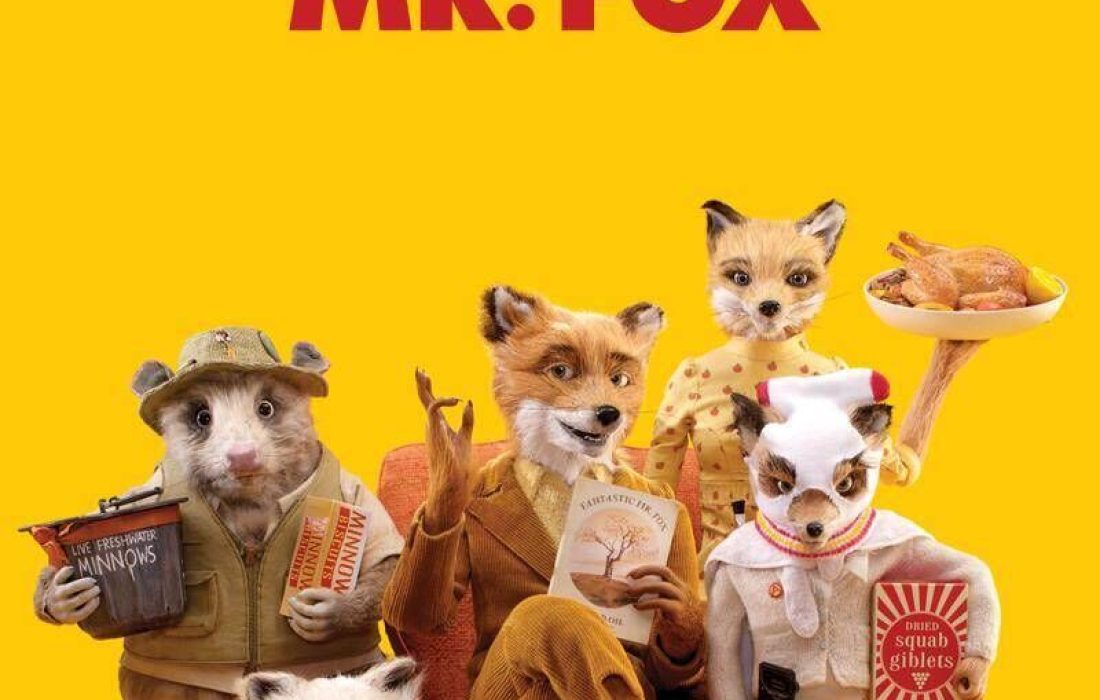Writer Rachael Wexler reflects on Wes Anderson’s “The Fantastic Mr. Fox” is a testament to the ability of film to convey complex and emotional topics.
ReView: The Heart-Wrenchingly “Fantastic Mr. Fox”
Intertwining mature themes with youthful stop-motion delivery, the universe of Wes Anderson’s film “Fantastic Mr. Fox” presents the connection between playful entertainment and recurring adult tropes like self-discovery. Its wistful soundtrack, vibrant cinematography and raw conveyance from each prominent voice actor make it a classic comfort movie.
Having only seen it for the first time on its 10th anniversary in 2019, it immediately became a prominent favorite of mine due to its zany nature. I was unaware of the artistic impact it would have on the way I view movies from then on, introducing me to distinct film techniques such as the many ways to visually frame a scene.
This year, on the film’s 15th anniversary, I still sit in awe at the harmonious pastel color palette and quirky dialogue. These trademarks from Anderson, whose movies I have since cherished, have become building blocks I look for in other indie films.
Mr. Fox, voiced by George Clooney, and Mrs. Fox, voiced by Meryl Streep, begin as a thieving duo, stealing everything from chickens to squab on the prairie they called home. With their first cub Ash on the way, they vow to embrace familial responsibilities and live quietly underground. Mr. Fox pursues an ordinary job as a columnist but secretly reverts back to his sly ways 12 years later by plotting to steal from three neighboring farmers.
An adaptation of the ‘70s children’s book by Roald Dahl, the stop-frame film surrounds Mr. Fox’s midlife crisis. Its youthful way of delivering lessons about identity and ego encouraged me to deeply analyze who Mr. Fox is, and why he may do a flashy signature move — a whistle clicking sound with his mouth.
I immediately realized the irony when the characters adultify the childlike dialogue through phrases like “What the cuss?” The complex, humanistic relationships pay homage to the original novel, with Anderson putting his own bizarre spin on the characters and their humor.
The film’s heart-wrenching lines from Mr. Fox tend to catch me off guard, even in a rewatch. After Mr. Fox’s stunts result in the entire animal community facing a life or death situation, his family confronts the dire consequences of Mr. Fox’s selfish decisions.
“In the end we all die, unless you change,” Mrs. Fox said.
Anderson’s signature, straight-on composition is a treasured feature for me. Any paused moment can be admired for its symmetry, aesthetic and whimsical appeal. The heist scenes entrance me. They’re full of hyper-fantasy yet hold balance as sometimes each character can be seen lined up by height, showing the detail behind each shot.
Animalistic instinct creeps into the mind of Mr. Fox as he contemplates what it means to be a fox. With no other option but self-reflection, his brief monologue discussing the meaning of life felt like a personal attack. Revealing a vulnerable thought that’s overtaking him. Mr. Fox shows his fear of failure and how that impacts his role as a father and husband.
“Who am I, Kylie?” Mr. Fox said, just before breaking his responsible streak of not stealing. “Why a fox? Why not a horse, or a beetle or a bald eagle? I’m saying this more as, like, existentialism, you know? Who am I? And how can a fox ever be happy without, excuse the expression, a chicken in its teeth?”
Attempting to pinpoint his life’s purpose, Mr. Fox allows viewers to find relatability even in films about foxes and badgers living underground.
Amidst Mr. Fox’s selfish ways, his son Ash’s character becomes just as complex. He is constantly compared to his smarter, more athletic cousin Kristofferson, and labeled an outcast.
While I sat in awe of each running theme, the strange ways of communication in the film resonated with me. The viewer becomes sympathetic towards overlooked characters like Ash, another redeeming quality from Anderson with his ability to highlight stirs of seemingly insignificant emotions in characters.
Though Anderson has said stop-motion doesn’t usually draw an audience, I think that’s the selling point of the movie. Anderson said that in production it became more personal to him at each stage of writing and animating. The minute movements and realistic, furry style of the characters and their costumes imply the immense amount of work behind making this movie beautifully cohesive.
Weaving in aggressive antagonists and side plots, this film maintains a fast-paced tempo which aids my generation’s plummeting attention spans. Various personal challenges are illustrated for individual characters, allowing intricate, gratifying endings for each of them.
In the grand scheme of films worth spending hours dissecting, “Fantastic Mr. Fox” ranks high on my list.
“Fantastic Mr. Fox” is streaming on Max.
ReView is a recurring film review column.
Featured image courtesy of Searchlight Pictures
Topics
Get the Loyola Phoenix newsletter straight to your inbox!



